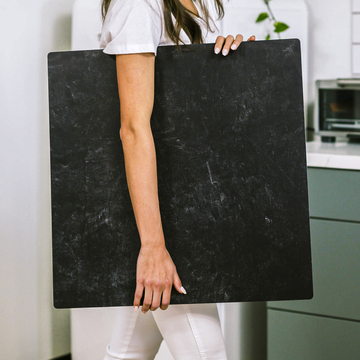You've spent hours perfecting that recipe. The lighting is just right, the garnish is on point, and your camera settings are dialed in. But something's missing - your food photos still don't have that mouthwatering quality that stops scrollers in their tracks.
Here's the truth most food photographers won't tell you: your backdrop is doing 80% of the work. That innocent-looking surface beneath your dish? It's secretly controlling how appetizing your food appears, how professional your shots look, and whether people actually want to make your recipe.
The Backdrop Material That Makes or Breaks Your Shot
Not all surfaces are created equal. The material you choose sends subconscious signals about your food:
- Matte wood: Says "homemade" and "rustic" - perfect for artisanal breads or farm-fresh salads
- Glossy marble: Screams "luxury" - ideal for decadent desserts or craft cocktails
- Textured stone: Whispers "authentic" - great for ethnic cuisine or hearty dishes
Pro Tip Most Photographers Miss
A simple trick: lightly mist wood surfaces with water before shooting. This enhances the grain texture just enough to add depth without looking artificial. For marble, use a polarizing filter to control those distracting highlights.
Color Psychology: The Hidden Hunger Trigger
Your backdrop color influences how people perceive your food before they even read your recipe:
- Warm browns: Trigger comfort cravings (think chocolate chip cookies)
- Cool blues: Suggest freshness (perfect for seafood or salads)
- Deep blacks: Imply sophistication (ideal for gourmet dishes)
Here's a game-changing combo: try pairing a slate-blue surface with orange-toned foods like roasted salmon or pumpkin soup. The color contrast makes dishes literally jump off the screen.
3 Simple Tricks to Add Professional Depth
Amateur food photos look flat. Pros create dimension with these easy techniques:
- Use a small box or inverted bowl under your dish to create height
- Shoot at f/2.8 to softly blur the foreground edge
- Add "lived-in" elements like a crumpled napkin or scattered ingredients
Try this test: photograph the same dish on a flat surface, then again using these depth tricks. The difference will shock you.
The Future of Food Backdrops
While adjustable LED surfaces and AI-generated backgrounds are emerging, nothing beats the authenticity of real textures. That slightly imperfect wood grain? The natural variations in stone? Those subtle details trigger our instinctive craving for real food.
Your challenge this week: experiment with one new backdrop technique. Whether it's trying a different material or playing with color psychology, small changes can transform your food photography from forgettable to frame-worthy.
Remember: your backdrop isn't just background noise - it's the silent partner that makes your culinary creations shine.



